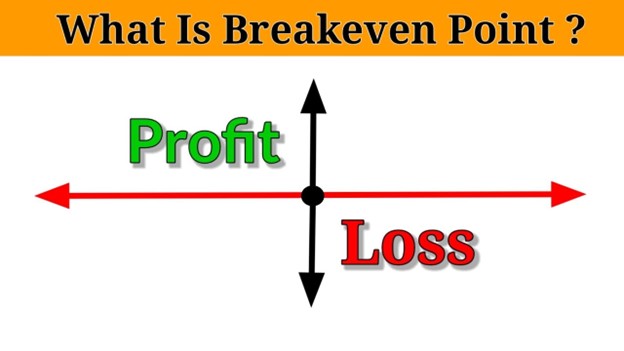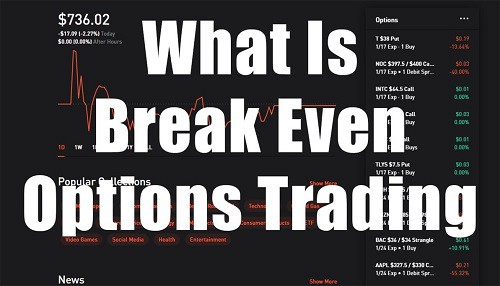Introduction: The Dance of Options in the Financial Ballet
The vast world of finance, with its multifaceted instruments and strategies, can often resemble a theatrical performance. Among its brightest stars are options. However, to let these stars truly shine, we need to cast the right spotlight. Enter: the break-even price.
Delving into Options: A Primer
Options, for the uninitiated, can be likened to tickets for an anticipated event. Holding this ticket grants you a choice, a potential access point, without thrusting an obligation upon you. They give the holder the right, but not the commitment, to buy or sell a particular asset at a pre-agreed price before a specified date. Consider, for instance, a ticket to a music concert. You can choose to attend, indulge in the symphony, or you might just decide to skip. It’s all up to you.
The Pivotal Role of Break-Even in the World of Options
Now, diving into the heart of our topic, if you’ve been contemplating “what is breakeven in options?“, think of it as the fulcrum of a seesaw. The exact point where it perfectly balances, neither tilting to the side of profit nor to that of loss. This is your guiding star, your reference, especially when maneuvering the volatile seas of options trading.
Diving Deeper: Decoding the Break-Even Price of an Option
At its core, the break-even price is a trader’s North Star. It’s that unique price point where, should you decide to exercise the option, the total money you’d shell out equals the total money you’d rake in. Thus, you’re neither in the green nor in the red; you’re at a neutral, zero-net-loss/profit position. It’s like that brief moment of weightlessness at the peak of a roller coaster ride, right before the thrilling descent.
The Mathematical Approach: How to Calculate the Break-Even Price?
While options trading can seem daunting, especially with its array of jargons, calculating the break-even price is, fortunately, a straightforward endeavor. However, the method undergoes slight variations, contingent on the type of option in question.
Call Options Unveiled
When dealing with call options, the break-even calculation embodies the sum total of the strike price (that is the price at which you’ve agreed to buy/sell the asset) and the premium you’ve parted with. It’s akin to entering a theme park after purchasing an entry ticket and then deciding to indulge in a special ride, requiring an additional ticket. Your total expenditure is the aggregation of both these costs.
Break-Even Price = Strike Price + Premium Paid
Put Options Explored
Conversely, for put options, the arithmetic is a tad different. Here, you deduct the premium from the strike price. This can be equated to ordering a lavish meal at a fancy restaurant but having a discount coupon at hand. Your actual expense would be the original price minus the coupon’s value.
Break-Even Price = Strike Price – Premium Paid

Practical Implications: The Utility of Break-Even in Trading Strategies
Merely understanding theoretical concepts doesn’t quite cut it in the dynamic realm of trading. The real magic unfolds when these concepts are harnessed in actual trading escapades.
Mitigating Potential Risks
Being cognizant of the break-even point equips traders with the prowess to set up protective barriers. In the realm of options, market fluctuations are more the rule than the exception. Hence, akin to a seasoned sailor knowing when to dock the ship before a storm, a trader can decide when it’s prudent to exercise the option based on the break-even price.
Unlocking Potential Profits
Similarly, in fair weather, when the market is favorable, recognizing the break-even point can be the wind beneath a trader’s wings, propelling them towards judicious decisions. It acts as a compass, directing traders on whether it’s wise to sail forth or anchor down, thus optimizing profit avenues.
A Glimpse Through the Real-world Lens: Analogizing Break-Even Price
Let’s consider the break-even price as a threshold of a new restaurant you’re keen on venturing into. Before you even taste the cuisine, you’ve already incurred some costs – maybe a reservation fee, or a cover charge. The quality and quantity of the food you get for your money will determine if you feel the evening was worth it. If you walk out feeling just as satisfied as the money spent, you’ve hit your break-even. Anything more, and it’s a delightful profit. Anything less, it’s a regrettable loss.
Debunking the Myths: Common Misunderstandings about Break-Even in Options
A common misconception is that the break-even point is a static, unwavering entity. On the contrary, it’s fluid, shifting with variables like time and volatility. Another myth is that it’s the ultimate goal. While vital, it’s just a reference, not the endgame. The endgame is always maximizing profits and minimizing losses.
Wrapping Up: The Value of Recognizing Break-Even for Enlightened Trading
So, as we draw the curtains on this deep dive into the break-even price in options trading, it’s pivotal to acknowledge its significance. It’s not just a mathematical figure; it’s a beacon, guiding traders through the tempestuous waters of the financial world. Embracing its understanding is akin to equipping oneself with a potent tool, ready to be wielded in the grand arena of options trading.
FAQs: Clearing the Clouds of Confusion
- How does the break-even price differ between call and put options?
As highlighted, for call options, it’s the strike price plus the premium. For put options, it’s the strike price minus the premium. - Why is the break-even price pivotal in options trading?
It serves as a trader’s compass, pointing to potential profit zones and cautioning against probable risk zones. - Is the break-even price the ultimate profit target?
No, it’s just the point of no loss, no gain. The true aim is to soar beyond this point for profits. - How does volatility impact the break-even price?
Volatility can sway the premium, which in turn, affects the break-even price. - Do all options traders use the break-even price?
While it’s highly beneficial, not all traders might use it, depending on their strategy and risk tolerance. However, most seasoned traders recognize its importance.





















